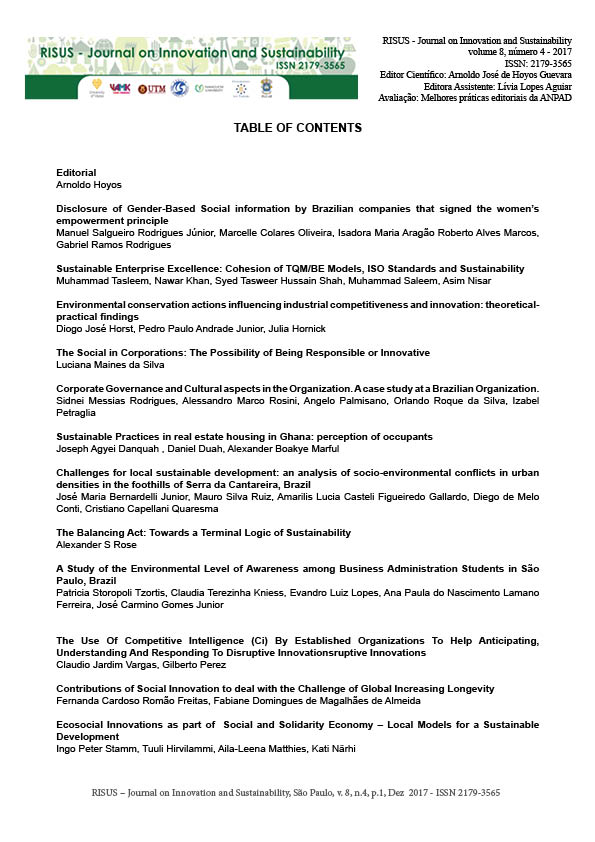CONTRIBUTIONS OF SOCIAL INNOVATION TO DEAL WITH THE CHALLENGE OF GLOBAL INCREASING LONGEVITY
DOI:
https://doi.org/10.24212/2179-3565.2017v8i4p181-199Keywords:
Social Innovation, Longevity, demographic pyramidAbstract
Brazil, and the entire world, are going through an inversion of the demographic pyramid, due to the convergence of longevity increase and birth rates decrease. This new reality creates challenges and requires innovative initiatives that can provide solutions to the needs that surface with this unprecedent transformation in History. Social innovation stands out as an alternative to promote inclusive solutions for the population that will live longer. The present research aims to answer how the social innovation proposes solutions that can be used to overcome the challenge of the growing longevity of the population. In order to achieve the purpose of this research, we chose to analyze Social Innovation from the perspective of the outcome. For this, Bruin and Stangl (2013), proposes for this type of analysis specific dimensions. We also analyze the profile of interviewing organizations to verify whether they meet the pillars of active aging proposed by OMS. The research undertaken here is qualitative and exploratory in nature, since the objective is to examine a little studied research theme or problem, a new or unknown phenomenon. (SAMPIERRE, 2006). The results showed that both organizations meet at least two pillars of active aging and can be considered as a social innovation that is scalable and can be replicated. The brief research undertaken here only fulfills an initial objective of locating initiatives that make it possible to visualize cases of successful social innovations, with the purpose of stimulating new reflections and research on the phenomenon and to address a gap identified by previous research in regard to bringing Reports of experiences of Social Innovation to improve the understanding of this growing field of research.Downloads
Published
2017-12-24
Issue
Section
Papers
License
This Journal is licensed under a Creative Commons Attribution-Non Commercial-No Derivers 4.0 International license.
1.The author (s) authorize the publication of the article in the journal;
2.The author (s) warrant that the contribution is original and unpublished and is not in the process of being evaluated in other journal (s);
3. The journal is not responsible for the opinions, ideas and concepts emitted in the texts, as they are the sole responsibility of its author (s);
4. The editors are entitled to make textual adjustments and to adapt the articles to the standards of publication.


